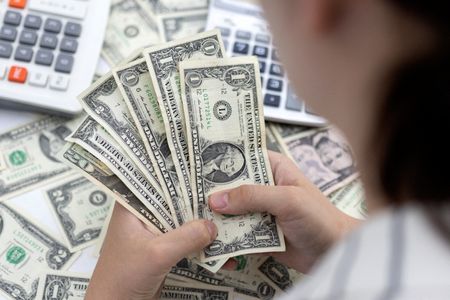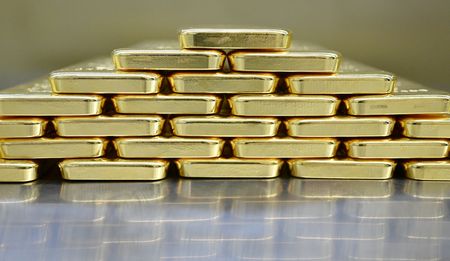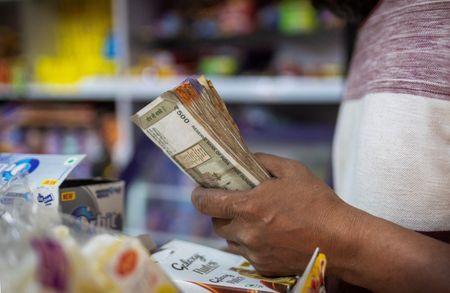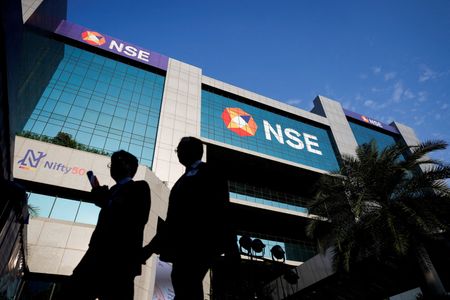By Jaspreet Kalra
SINGAPORE (Reuters) -The dollar was steady on Friday but poised for a weekly fall as U.S. President Donald Trump’s temporary choice for a fill-in Federal Reserve governor stoked expectations for a dovish pick to replace chair Jerome Powell when his term ends.
As concerns over softening U.S. economic momentum, especially in the labour market, boost hopes of Fed rate cuts, the dollar was down 0.6% on the week so far, against a basket of peers.
On the day, the dollar index was little changed, at 98.1.
Trump has nominated Council of Economic Advisers Chairman Stephen Miran for a newly vacant seat at the Fed, while the White House seeks a permanent occupant. Miran replaces Governor Adriana Kugler following her surprise resignation last week.
While investors remain worried about the U.S. central bank’s independence and credibility after repeated criticism from Trump for not cutting interest rates, some analysts feel Miran’s appointment is unlikely to have a material impact.
“We still maintain that central bank independence is going to be very much intact,” said Raisah Rasid, global market strategist at J.P. Morgan Asset Management in Singapore.
She expects the central bank to focus on incoming data and the overall health of the U.S. economy.
Trump’s scathing attacks on Powell and the likelihood of a dovish pick as the next Fed Chair have weighed on the dollar, although he recently backed off threats to oust Powell before his term ends on May 15.
Fed Governor Christopher Waller, who voted for a rate cut in the Fed’s last meeting, is emerging as a top candidate to be the next chair, Bloomberg news said on Thursday.
Investor focus will now switch to next week’s U.S. consumer price inflation data with economists polled by Reuters expecting month-on-month core CPI to have nudged higher to 0.3% in July.
The data will offer clues to whether tariff-driven price pressures are materialising and shape the Fed’s policy path.
Atlanta Fed president Raphael Bostic said on Thursday while risks to the job market have increased, it remained too soon to commit to rate cuts, with more data lined up ahead of the Fed’s policy review scheduled for September 16 and 17.
Traders are pricing in a 93% chance of a rate cut in September, with at least two rate cuts priced in by the end of the year.
The dollar has struggled broadly this year and is down 9.5% against a basket of major peers, as investors sought alternatives, worried over Trump’s erratic trade policies.
Analysts anticipate the dollar to remain under pressure but see the fall unlikely to be as steep.
“We’re looking for a bending but not breaking sort of scenario (on the dollar),” Rasid added.
Sterling hovered near a two-week high at $1.3439, clinging to Thursday’s sharp gains as the Bank of England cut interest rates but only after a narrow 5-4 vote, showing a lack of conviction in its easing bias.
The vote split in the BoE meet “implies one of the most hawkish versions of a 25bp cut that reasonably could have been expected,” analysts at Goldman Sachs said.
The pound is on course for its best weekly performance since late June.
The Japanese yen was flat at 147.1 a dollar and the euro was perched near a two-week high, as investors took comfort in the prospect of talks between the U.S. and Russia aimed at ending the war in Ukraine.
Russian President Vladimir Putin and U.S. President Donald Trump will meet in the coming days, Kremlin aide Yuri Ushakov said on Thursday, for the first summit of the nations’ leaders since June 2021.
(Reporting by Jaspreet Kalra and Ankur Banerjee in Singapore; Editing by Sam Holmes and Clarence Fernandez)










